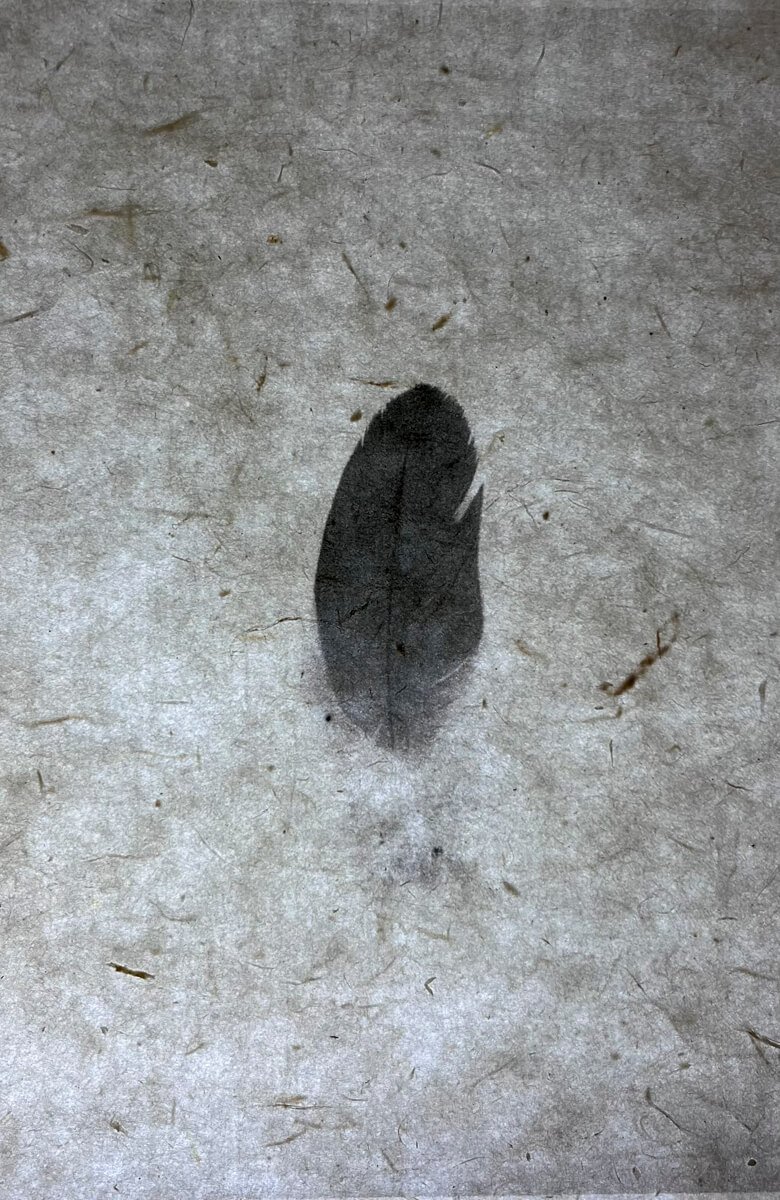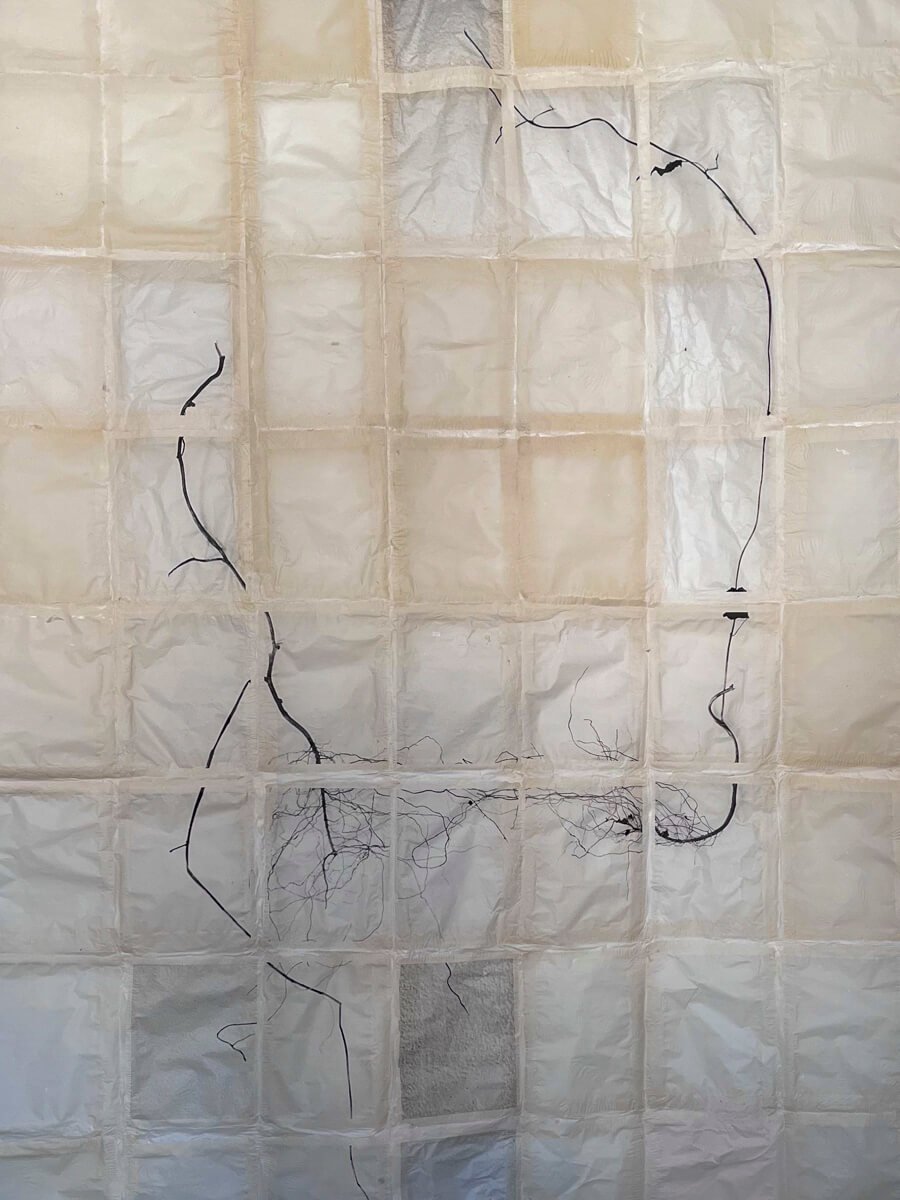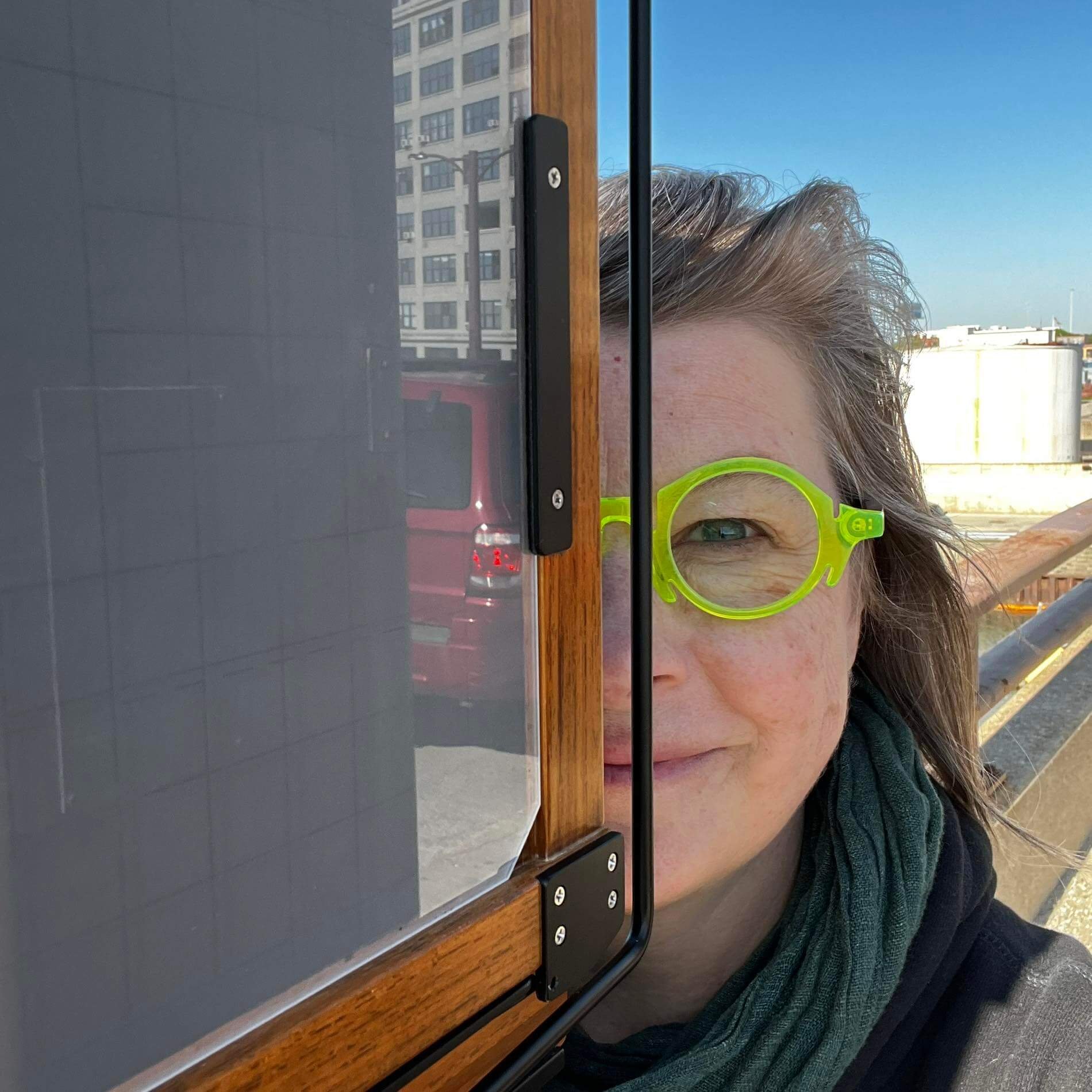Hillary Johnson
Hillary Johnson is a multidisciplinary artist who works in photography, video, handmade books, and immersive multimedia installations. She’s interested in the tension between heartache and beauty; grief and joy; and longing and belonging that underpin the human condition. Her work and research have their roots in twin threads of anxiety: a global cultural anxiety that developed during the industrial age in the mid-1800s, expanding exponentially in the Anthropocene era as our complicity in climate change was revealed, and her own personal existential concerns. Her work engages the body in the process of coming to know a place through slow walking and mindful observation. Johnson’s photographs of the landscape and portraiture examine drastic upheavals that transform or destroy delicate beauty in both the environment and humankind. She believes that photography can be part of an expansive exploration of empathy, consciousness, and connection for positive social and cultural change.
Johnson is an MFA Candidate in Photography at Columbia College Chicago, where she also serves as a Curatorial and Education Assistant at the Museum of Contemporary Photography. She is a recipient of the Albert P. Weisman Award and the Thall-Mulvany Award for her work creating immersive installations that explore ways in which art and science may be a critical piece of how we create a more loving and compassionate world. Her work has been featured in the 2nd Quanzhou International Image Biennale at the Fujulian Huanguang Photography Art Museum, Hüten Gallery in Shanghai, China, Image Union, Pasadena Photo Arts, The Chicago Reader, National Public Radio, NBC News, A Photo Editor, and Frontrunner Magazine. Her works have been exhibited across the United States and internationally.
Artist Statement
I'm interested in the unity of experience, perception, and expression. To see the world in terms of what is inside or outside of myself feels like an inaccurate binary, a misunderstanding. Feelings that arise in the presence of beauty are the result of energetic resonance and alignment, a form of communication between self and others, including those to whom the term "sentience" may not typically be attached.
It’s no accident that the forms and functions of the human nervous system and those of other organisms, including those of the plant world, are visually and functionally similar. The primary distinction between them is mainly a matter of processing speed. Working in the landscape and even in my own garden, I feel what John O’Donohue wrote to be true: “...the Beautiful offers us an invitation to order, coherence, and unity. When these needs are met, the soul feels at home in the world.”
I began photographing in the landscape in 2017. Initially, working on Lake Superior, later in Nova Scotia, Baraboo, Wisconsin, and other places. Initially overwhelmed by the beauty and fragility I encountered, I spent a lot of time walking, getting to know the land and myself, reconnecting with the knowing that everything was alive and in communication. My experiences in the land, my relationships with each place, plant, and person, are indelibly stamped in memory. It is all of that to which these pieces speak, and I hope carry their meaning forward to you.
www.hillaryjohnsonphoto.com
What initially drew you to art?
Both making and viewing art has been part of how I process and make sense of the world. I was fortunate to grow up in a family in which the arts were considered essential. I understood from a young age that art was a critical part of a full life and played an important therapeutic role in human life, to express more than can be said with words alone. Making things and visually expressing myself, especially using the body, has always been important to me.
What elements of your life have ended up becoming a part of your art?
My work is very grounded in the wise inner being that has always been part of me, that part who simply knows what she knows. Part of that knowing is all about the unity of life, that all is one, that there's no separating this from that. Like the Thich Nhat Hanh story about the wave: when the wave remembers she is also the sea, she stops suffering and remembers she is water too, and thus she is never alone. She always has a place and always belongs. As Mary Oliver put it in her poem, Wild Geese, she has her place in the family of things. To me, there is no part of life that is not spiritual—that is simply the lens I look through. So, this informs all of my work. I am interested in how human beings relate to each other and to this planet, this earth we call home. The physical part of making my work is more important than ever. I feel that today, when so much feels ungrounded and virtual, the actions of the artist (of each of us, really) are critical. Making real things, actual things with my hands, through the efforts of my mind, heart, and body, are important. The effort of each individual matters so much. The experience of it, the learning that comes from making things in which there's no "Control-Z" out of it, is necessary for us to learn. Those challenges are the way forward.
What about your practice do you find the most fulfilling and/or energizing?
This really follows the last question so beautifully. I'm energized by a sense of purpose to serve and to live in alignment with the Universe, with the Divine, as authentically and consistently as I can. As Gay Hendricks writes in his book The Big Leap, I strive to live each day, “expanding in abundance, success, and love every day, as I inspire those around me to do the same.” I love all aspects of making my work, but I think I love most of all the conversations that happen when people really resonate with the work and feel some powerful feelings of their own sense of belonging and connection. I love when people tell me how my work speaks to them and how living with the work brings joy into their lives or gives them a spark of hope, of resilience.
Tell us about your experience getting to where you are now. What has been the most important thing you’ve learned?
It's been a long and twisting journey and completely full of surprises. The two most important things I've learned are how absolutely essential it is to be true to myself and listen to that inner voice who knows, and to submit myself to life as it unfolds with humility. As I crossed the stage for graduation this weekend with my MFA in Photography from Columbia College Chicago, I could not stop thinking of the incredible village of folks who have made this amazing journey of mine possible.
How has ‘community’ impacted your artistic practice?
Community is everything! I'm so blessed to have been the recipient of so much care, inspiration, and support from truly brilliant teachers, artists, and mentors. Now, as I continue down this new branch in my path as a professional artist, I'm really excited to always be looking for ways to pay all of that kindness forward. To me, there's nothing more sad, more tragic than dying with regrets. I believe each of us has a gift inside of us which we were put here to bring forth. If we don't bring those gifts forth, what's within us destroys us. But when we do bring those gifts out to the world, they save us, and thus we save each other, the world. I dedicate myself to bringing forth my own gifts and helping others to bring forth theirs. We need our best selves right now, for the highest good of all, now more than ever. That is what community can do.





